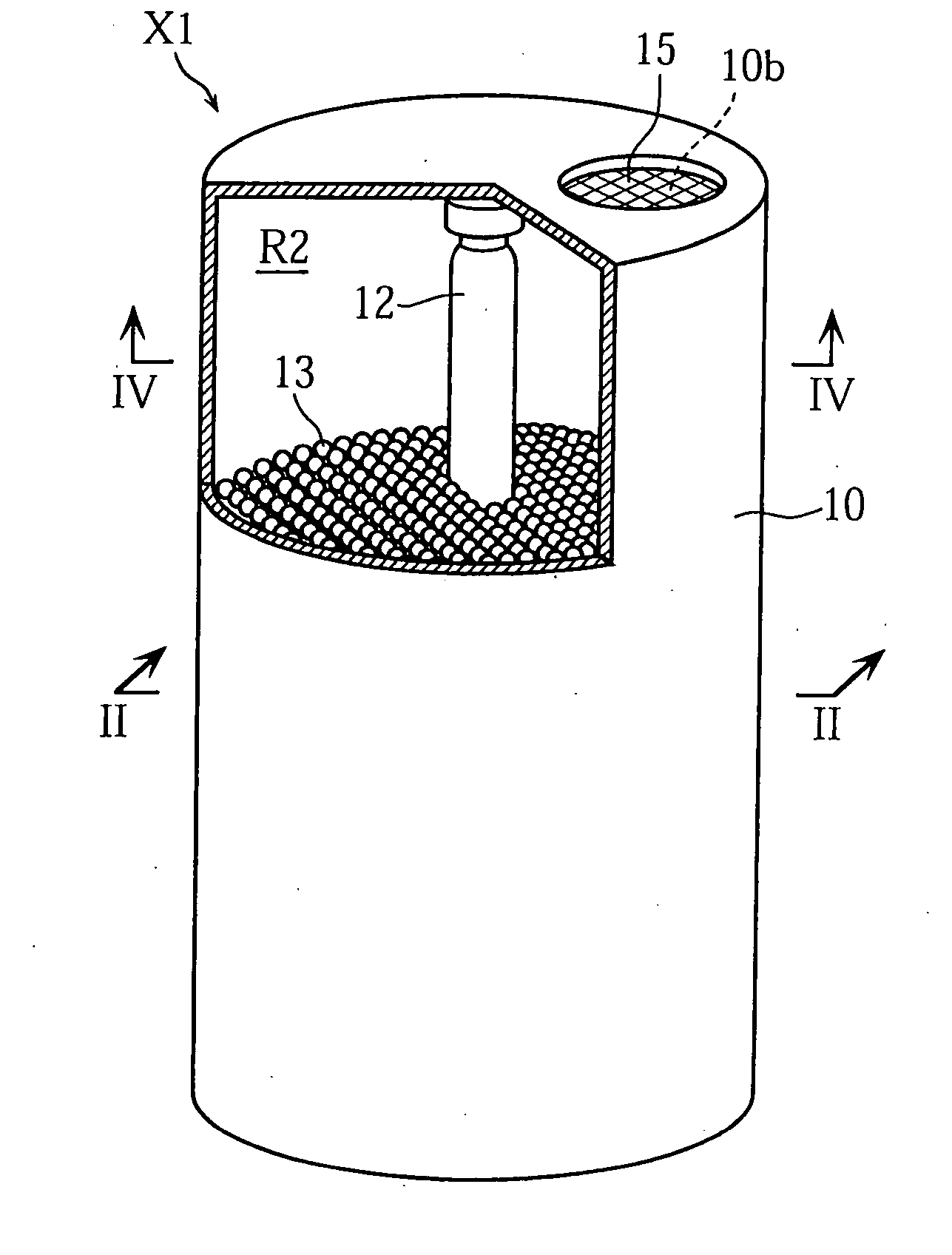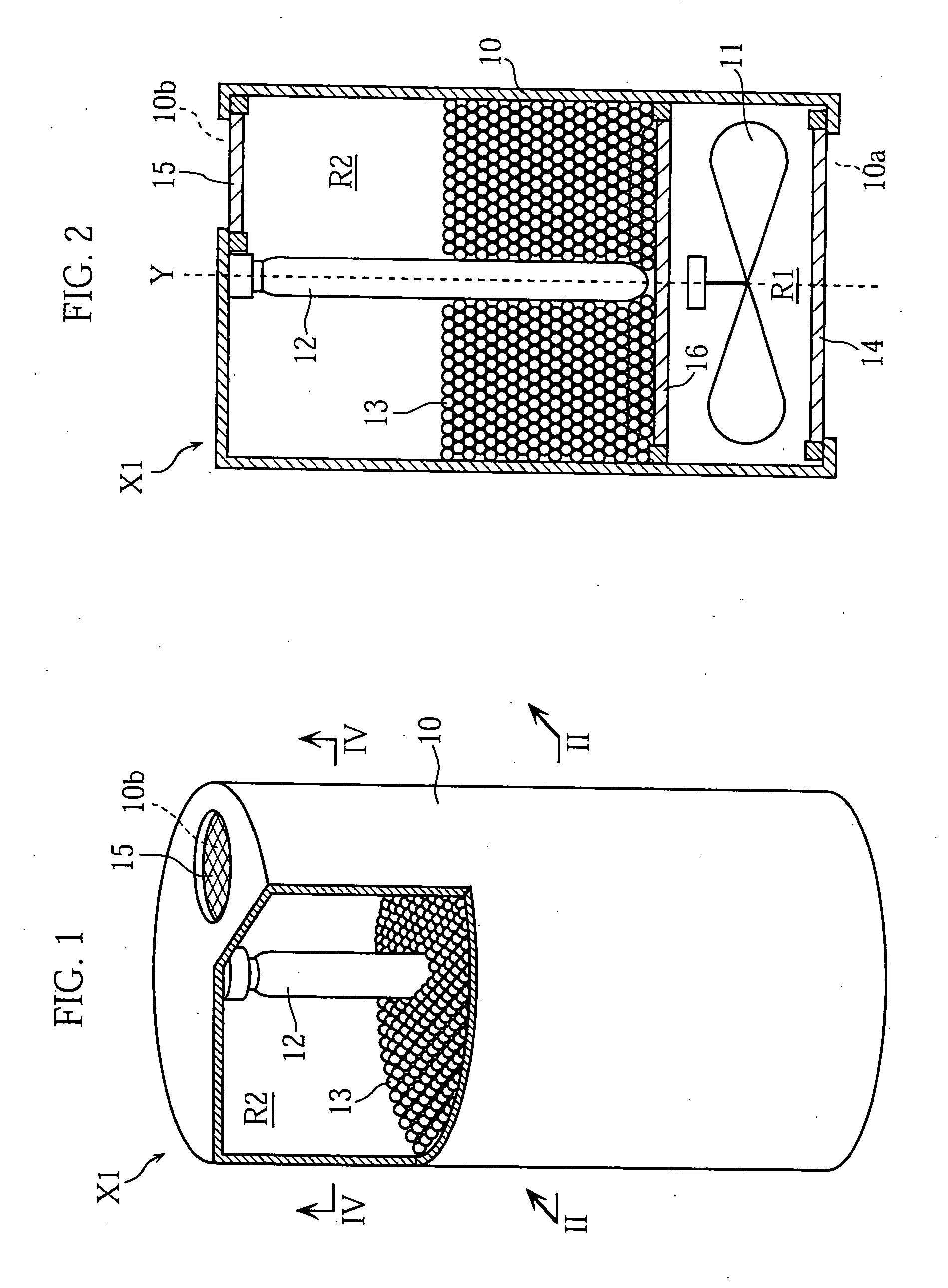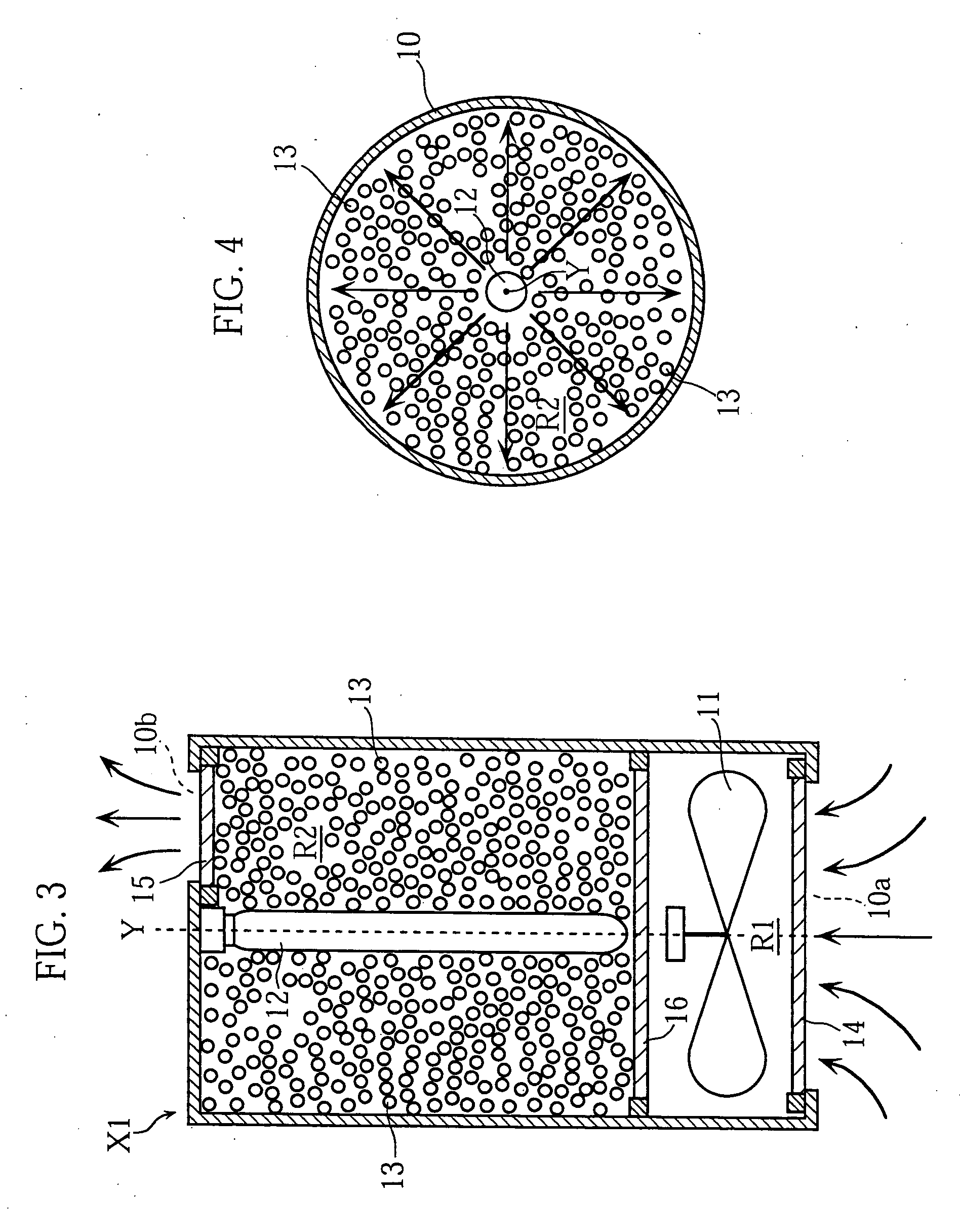Air cleaner
- Summary
- Abstract
- Description
- Claims
- Application Information
AI Technical Summary
Benefits of technology
Problems solved by technology
Method used
Image
Examples
examples
Production of Photocatalyst Granules
[0055] 0.1 g of Ti-CaHAP powder (used as photocatalytic apatite; average secondary particle size: 5.7 μm, titanium content: 10 mol %) was uniformly made to adhere and fixed to the surface of 1 g of foamed polystyrene beads (average particle size: 5 mm).
[0056] More specifically, first, 500 g of an aqueous dispersion containing 20% photocatalytic apatite (made by Meisei) was mixed with 200 g of an acrylic resin-based binder (trade name: TASRESIN UND-A, made by Bayer). Next, a photocatalytic apatite coating solution was prepared by diluting this liquid mixture with water so that the final volume was 1 L. Foamed polystyrene beads were then immersed in this coating solution. The foamed polystyrene beads were then lifted out of the coating solution and then put in a dryer (100° C.) and dried by being allowed to stand for 1 minute. This produced photocatalyst granules.
Measuring of Photocatalytic Function
[0057] An air cleaner having the structure show...
PUM
| Property | Measurement | Unit |
|---|---|---|
| Fraction | aaaaa | aaaaa |
| Photocatalytic properties | aaaaa | aaaaa |
| Ratio | aaaaa | aaaaa |
Abstract
Description
Claims
Application Information
 Login to View More
Login to View More - R&D
- Intellectual Property
- Life Sciences
- Materials
- Tech Scout
- Unparalleled Data Quality
- Higher Quality Content
- 60% Fewer Hallucinations
Browse by: Latest US Patents, China's latest patents, Technical Efficacy Thesaurus, Application Domain, Technology Topic, Popular Technical Reports.
© 2025 PatSnap. All rights reserved.Legal|Privacy policy|Modern Slavery Act Transparency Statement|Sitemap|About US| Contact US: help@patsnap.com



